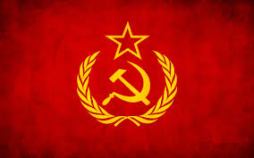 The whole world was shaken in 1917 when the Russian Revolution transpired. A single moment in history such as this has a profound effect that will echo for generations. For nearly 70 years the Soviet Union ruled Russia with an iron fist. The Russian Revolution led to both years of great difficulty and loss to years of fortitude and success. Unfortunately, the revolution that changed the country from capitalist to communist was inevitable. By ridding Russia of its last czar, the Bolsheviks were able to convert the country to a socialist economy, which then turned into a brief but bloody civil war.
The whole world was shaken in 1917 when the Russian Revolution transpired. A single moment in history such as this has a profound effect that will echo for generations. For nearly 70 years the Soviet Union ruled Russia with an iron fist. The Russian Revolution led to both years of great difficulty and loss to years of fortitude and success. Unfortunately, the revolution that changed the country from capitalist to communist was inevitable. By ridding Russia of its last czar, the Bolsheviks were able to convert the country to a socialist economy, which then turned into a brief but bloody civil war.
Russia was ruled by a czar, or emperor (short for Caesar), since its golden age of the Kievan Rus. A tight dynastic rule was held over the country in a hereditary line. However, a series of bad decisions weakened their influence and eventually meant they would fall out of favor with the people. Events such as the Russo-Japanese War and World War One resulted in a strong disapproval of the czar. The economy and pride of the people were greatly endangered during these times. Civil rest followed with multiple revolts against the government. Another factor in Nicholas II’s downfall was the monk Rasputin. A close advisor to the emperor and his family, Rasputin was able to manipulate the country from the inside. Many of the people distrusted the mystic and eventually killed him off. It was too late though, for Nicholas then abdicated in 1917. A year later, Nicholas and his family were executed in a barn to prevent further contravention.
What happened next was the seizing of the Russian government by Lenin and his communist Bolshevik party. A temporary governing power called the provisional government took the czar’s place at this time. Having returned from exile, Lenin gathered a large following of working class civilians and led rebellions across the country. Karl Marx’s Communist Manifesto greatly assisted Lenin’s popularity. Alexander Kerensky took over as prime minister. He tried to quell the revolutionaries along with the Russian army. With casualties left and right, tension grew between the people and the government. When Lavr Kornilov, general of the army, sent backup to protect the provisional bastions, Kerensky asked for aid. Lenin helped expel the army and subsequently gained more respect. On the other hand, Kerensky and the provisional government weakened. Vladimir Lenin sent to Petrograd to initiate a full-fledged revolution. The head of the operation was Leon Trotsky, who, without spilling any blood, overthrew the government during the October Revolution (October 25). Trotsky and Lenin turned the country into a communist regime. A treaty was signed between Russia and Germany, halting the war in 1918.
While some people were happy with the conversion, others were not too satisfied. The Bolshevik party polarized into the Whites and Reds. Consisting of Ally forces, anti-communists, and other liberalists, the Whites fought to revert the country and drive out the socialist despots. Leon and Vladimir’s armies were stronger and had more resources. As they gained control over more countries, they were able to counter the opposing party’s attacks. This war would decide the fate of Russia. There were numerous enemies of Lenin at the time, including the imminent return of Nicholas II (recall that he was murdered at this point in time to prevent his return). Trotsky’s armies were superior and beat back the opposition, permanently rendering Russia’s status as communist.
For further reading: The Complete Idiot’s Guide to World History by Timothy Hall (2008)
History the Definitive Visual Guide by Adam-Hart Davis (2007)
Atlas of World History by Kate Santon